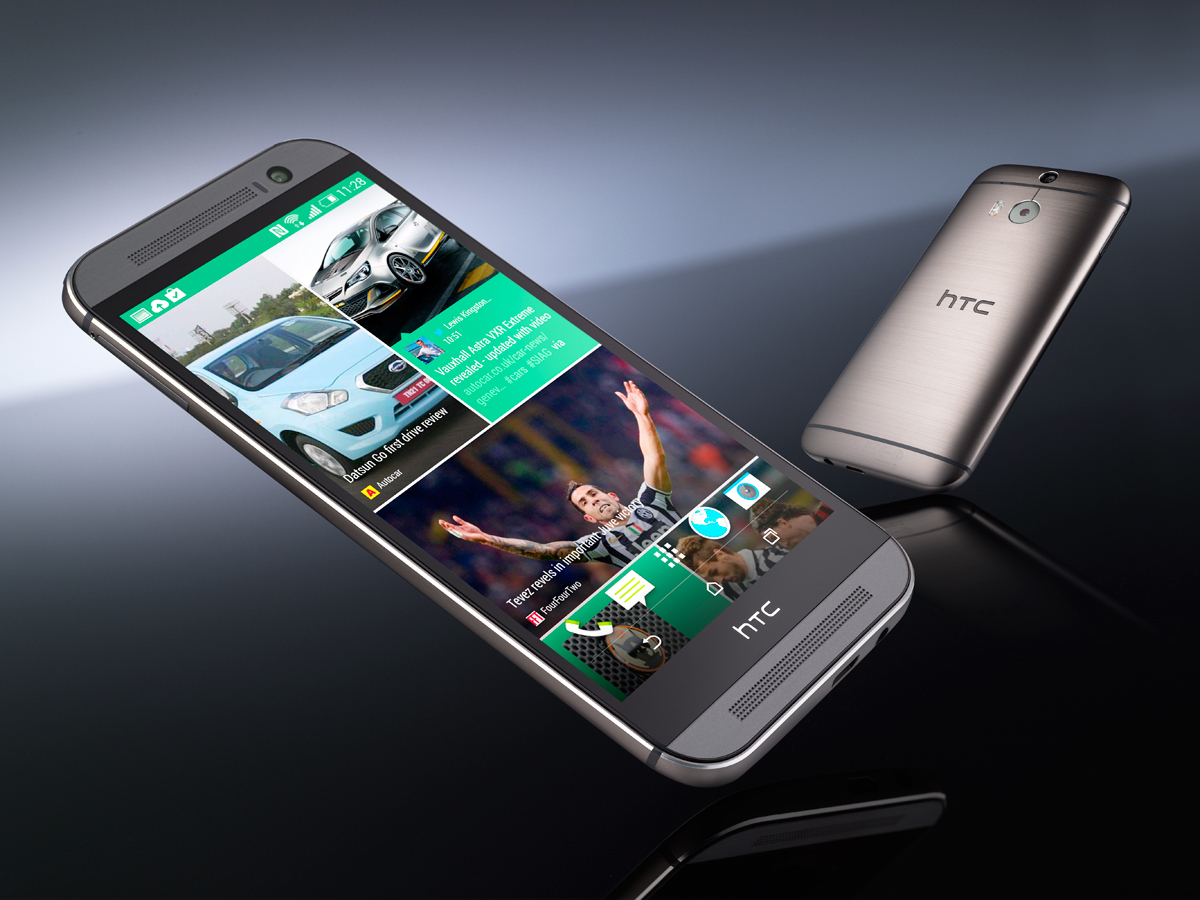LG G3 vs HTC One (M8)
It's LG's finest vs HTC's champion in this clash of the smartphone titans
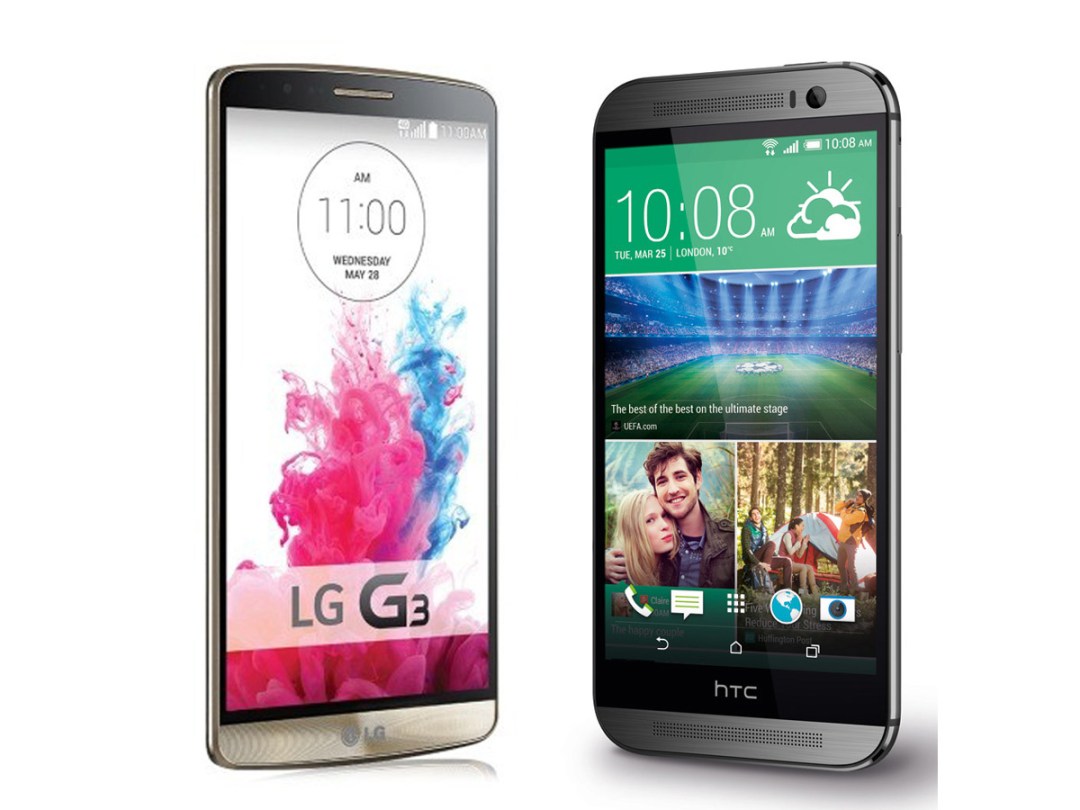
The HTC One (M8) beat off challenges from the Samsung Galaxy S5 and Sony Xperia Z2 to be crowned Stuff’s favourite smartphone in the world shortly after its release. But with the arrival of the LG G3, it faced its biggest challenge yet, and the G3 has now usurped it.
This time last year the HTC One was in the same position, only to lose its throne to the LG G2. History has repeated itself, but that’s not to say that One (M8) isn’t a formidable opponent.
Here’s how both superphones fair against each other when the gloves are off:
READ MORE: HTC One (M8) review
DESIGN AND BUILD – METAL VS FAKE METAL
Like the G2 before it, the LG G3 is a great looking phone in a smart, minimalist way. Viewed from the front it’s almost all screen, thanks to its impressively tiny bezels, and while it’s not particularly distinctive, it screams class.
As with the G2, the volume and power buttons are on the rear of the handset. It might seem odd, but you’ll soon get used to it. The speaker has also been moved round to the back, and either side of the camera lens you’ll find two more photographic features: a dual-tone flash and focus-aiding laser. More on them later.
There’s no all-metal build, but the shell is at least made from a premium plastic that’s designed to look and feel like brushed metal. Plus, it’s removable – allowing you to add extra storage space via microSD card and to swap out the battery.
The HTC One (M8) sports an altogether more flamboyant design. In fact, it’s the most beautiful Android phone we’ve seen so far, with a subtly curved body that’s almost entirely made from brushed aluminum. The attention to detail is immense, from the expertly drilled speaker grilles above and below the screen to the way the bevelling around the camera lenses is designed to catch the light.
HTC has finally seen fit to add a slot for microSD storage, but unlike the G3, the back isn’t removable,so you won’t be able to change the battery. It’s also worth bearing in mind that although the G3 has a much bigger screen – 5.5in to 5in – it’s almost the same size as the M8, on account of its small bezels and the HTC’s front speakers. Unlike rivals the Samsung Galaxy S5 and Sony Xperia Z2, neither phone is waterproof.
While the G3 has a bigger screen in a similar size body, there’s no fooling your fingers when you pick it up. The One (M8)’s build quality is sublime, and for that reason, it wins this round.
Winner: HTC One (M8)
READ MORE: LG G3 review
SCREEN – 2K WAHEY!

RIP full HD – you enjoyed a brief dominance of the smartphone screen world, but now you’re just passé.
Yes, only a year after we marvelled at the first phones with 1080p displays, LG’s released one with a 2K screen. Its 2560 x 1440 resolution is staggering for a smartphone – to put it in context, that’s the same spec as the screen on the 27in iMac. And the G3 is a mere 5.5 inches in size. All of which means that it has an incredible pixel density of 538ppi, a number that puts it above all other smartphones, tablets and in fact consumer devices of any kind.
The HTC One (M8) has to make do with a 5in, 1080p screen. Frankly, it should be ashamed of itself. In truth, its pixel density of 441ppi is hardly shabby either, but the G3 is the clear winner on specs alone.
Hype aside though, you won’t notice the G3’s extra pixels in normal use. Only when we scrutinised side-by-side reference photos, did the G3’s extra sharpness really stand out.
Not only that, but we found its colours to be more accurate, and a little less over-saturated than the ones on the One (M8)’s screen.
The One (M8)’s blacks and contrast are noticeably better than the G3’s, but overall the G3 comes out on top, especially as it manages to squeeze in a larger display without taking up noticeably more space in your pocket.
Winner: LG G3
READ MORE: HTC One Mini 2 review
PERFORMANCE – 801 times 2
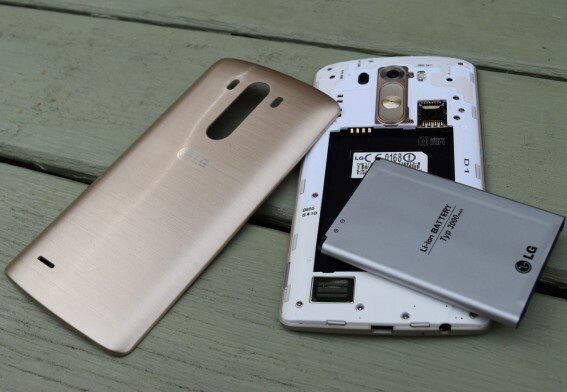
In terms of pure power, there’s very little to choose between these two smartphone titans. Both have Qualcomm Snapdragon 801 processors, with the G3’s clocked at 2.5GHz and the M8’s running at 2.3GHz. The G3 packs 2GB of RAM and 16GB of storage, although a version with 3GB of RAM and 32GB of storage might land in the UK at a future date. The M8 has 2GB of RAM in either 16GB or 32GB varieties.
Both phones score more or less the same reults in various benchmark tests, and numbers aside, they’re both slick and fast in normal use. Multitasking, 3D gaming and browsing are slick and fluid on both.
We’d expect things to be pretty similar on the battery front too. The LG G2 was one of the best phones around in terms of stamina, but the G3 falls al little short, eeking out around one-two hours less battery life a day.
Still, we managed to get 15 hours out of it with five hours of screen on time in a single day, which is an impressive achievement given the much bigger, higher-resolution screen. It’ll comfortably give you a full day of heavy use, which is an important box to tick.
The M8’s battery is smaller, at 2600mAh, but it also has a smaller screen to power. In our tests, we generally got a day’s use from it, but no more. Both phones also have clever battery-saving modes which will help you eke out every last drop of juice.
All told, there’s very little between the phones on the power front, so this one’s a draw.
Winner: Draw
READ MORE: Samsung Galaxy S5 vs HTC One (M8)
CAMERA – LOW-LIGHT FANTASTIC
Two very different approaches here.
Like the G2, the G3 has a 13MP rear camera with optical image stabilisation (OIS), but unlike the G2, it has the ‘+’ version of OIS, which provides software tweaks which, in theory, reduce blur even more.
LG has also included an infrared autofocus laser which it states can focus on subjects faster than the blink of an eye. While we haven’t got the stopwatch out to verify this, we can say that the G3’s autofocus is very snappy indeed.
Overall, our experience with the G3 cements it as having one of the best smartphone cameras currently available. It’s a superb all-rounder, excelling and surpassing the One (M8) in almost every category from well-lit conditions, to sharpness and natural colours.
The One (M8)’s 4MP UltraPixel sensor performs well in low-light conditions, but it just doesn’t serve up the same levels of detail as the G3. Yes, its low-light photos might be a little less noisy, but they’ll also be smaller, so you won’t be able to blow them up so big or crop into them.
The M8 has a new photo feature of its own too – the new Duo camera. This is a genuinely innovative feature which enables you to refocus photos after you’ve taken them. It works a little like the Lytro camera, although without quite such a dramatic effect. It’s a bit of a gimmick, yeah, but a nice one to have all the same.
The trouble for HTC is, the G3 can also create this post-shot focusing effect using Magic Focus. It takes numerous shots at different focal lengths in quick succession, before stitching them together and alowing you to change the focus post-shot.
In the One (M8)’s defence, you’re able do this whenever you fancy, while you can only change the focus on the G3 after the shot is initially taken.
Video-wise, the G3 can shoot 4K at 30fps and full HD at creamy 60fps and slo-mo 120fps. The M8 can do full HD and 120fps slo-mo, but no 4K.
Ultimately, we’ve got to give this round to the G3. It’s a jack of all trades, while mastering them too, thanks to welcome innovations like OIS+ and laser autofocus.
Winner: LG G3
READ MORE: The 25 best games on Android right now
OS – TALKING SENSE
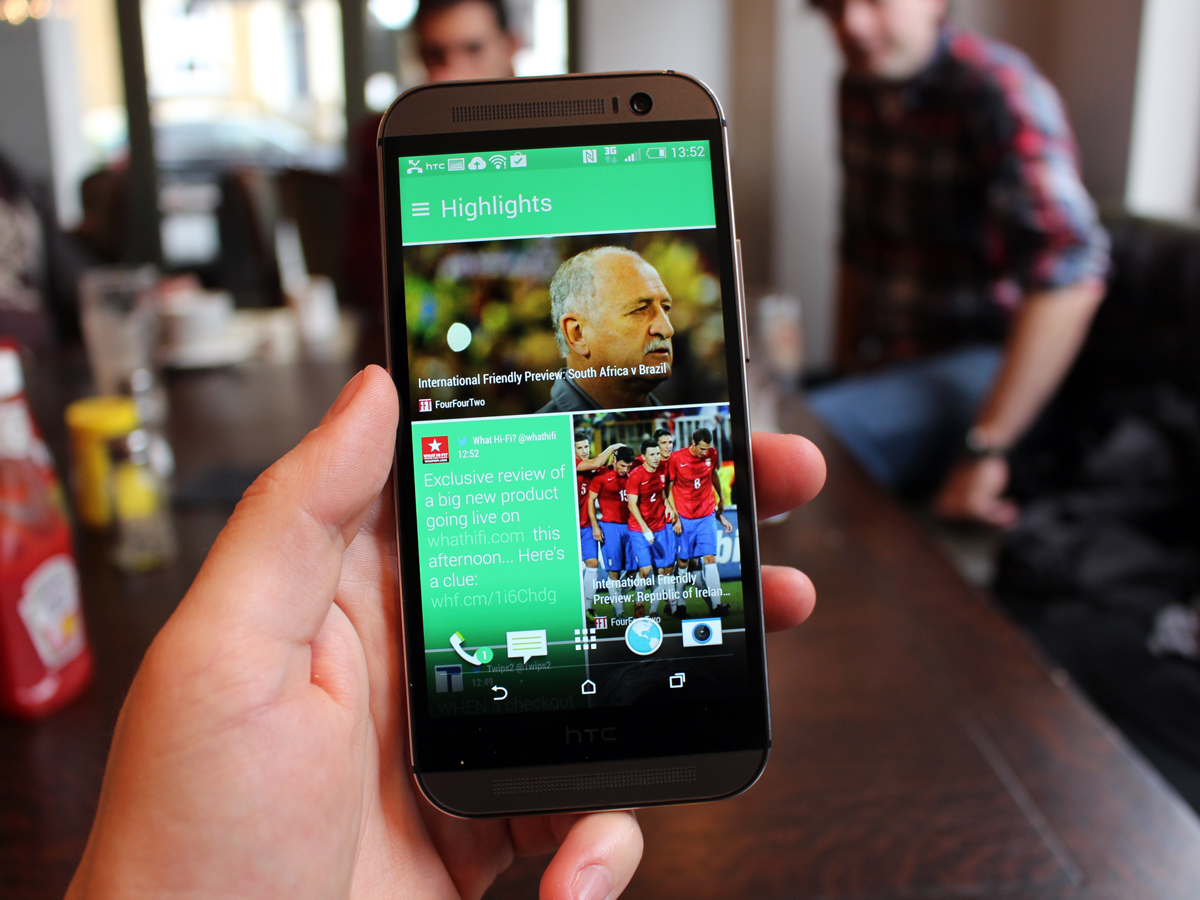
LG has jumped on the simpler UI bandwagon, giving its Android skin a fresher, flatter look. Colours are no longer quite so garish and much of the bloatware has seemingly been removed. And if you’re still not happy, you can mercifully uninstall nearly every pre-installed LG app, which is rather nice.
The G3 also has the excellent KnockCode feature, which we saw on the G Pro 2. This lets you unlock the phone simply by tapping out a preset pattern, which takes you straight to the home screen.
Another weapon in the G3’s OS arsenal is its Guest Mode feature, which lets you section off a safe area of the phone for when you lend it to, say, your kids. It’s like a safe sandbox which is separate from all of your apps, photos and documents, avoiding situations in which important files could be deleted.
The G3 also has a few little software touches which make using it easier. You’ve got the ability to include an extra button in the on-screen navigation bar which pulls the notification bar down for you. Given the awkwardness of reaching up to the top of the G3’s 5.5in screen with a single thumb, this comes in incredibly useful for one-handed use.
You can also track your steps and calories burned in an app similar to Samsung’s S Health, although it’s not as in-depth as dedicated health-tracking apps like Jawbone’s offering.
Sense 6.0 on the One M8 is one of the few examples of Android phones where a skin is a welcome addition, because HTC’s Sense 6.0 is a thing of beauty. It’s slick in use, not too overbearing and comes with the fantastic BlinkFeed. As a way of aggregating all of your social media feeds and favourite news sources, it’s unparalleled, and the new version also allows you to add RSS feeds of your choice.
Like the LG G3, the One (M8) can be turned on with a tap – although the fancy Knock Code pattern unlock is absent. You can however swipe left or right to fire up a certain app or go straight to the home screen, which is a nice bonus.
The charms of BlinkFeed will be enough to sway things HTC’s way for some, while for others the G3’s Guest Mode and Knock Code security unlock will be the more tempting option. Both devices have strong cases, so this one’s a draw too.
Winner: Draw
READ MORE: Exclusive – HTC shows Stuff how the One (M8) could have looked
VERDICT
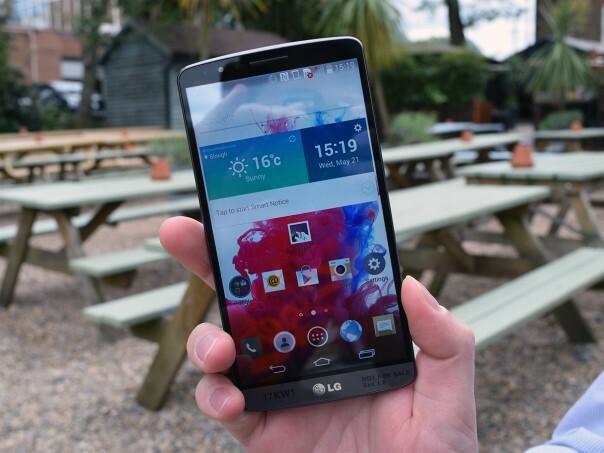
The One (M8) is a spectacular phone, and the fact that the G3 comes out on top against it shows just how high LG has set the bar with the G3.
Despite the HTC’s superior gorgeous metal build and the fact that the two phones are evenly matched in terms of power, the G3’s superb 2K screen, fantastic camera and removable battery make it a highly polished package that’s very hard to resist.
Overall winner: LG G3
READ MORE: These are the 10 best smartphones in the world right now
